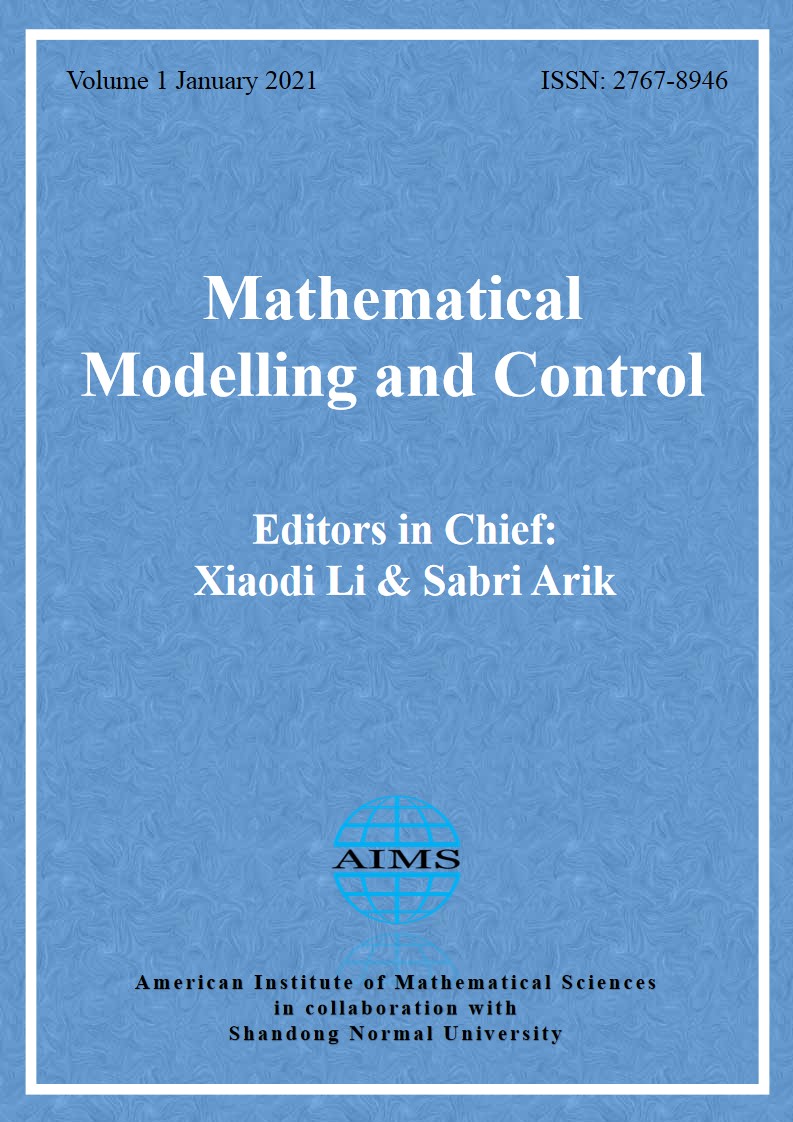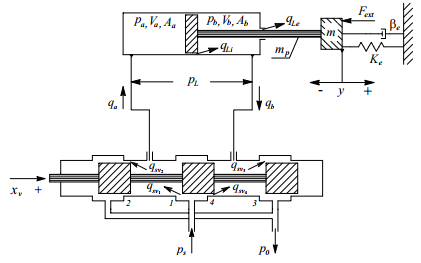1.
Introduction
A molecular graph in chemical graph theory is the graphical representation of the structural formula of a chemical compound in which the vertices represent atoms and edges represent chemical bond between those atoms. A topological index of a molecular graph G is a real number which characterizes the topology of G. Also it is invariant under graph automorphism. Topological indices have been widely used in Quantitative Structure-Activity Relationship (QSAR) and Quantitative Structure-Property Relationship (QSPR) studies. It has application in many folds, to name a few areas, biochemistry, nanotechnology, pharmacology. Bond energy is a measure of bond strength of a chemical compound. The distance between two atoms is considered as the bond length between them. The higher the bond energy, the smaller is the bond length between those atoms. The recently introduced 2-degree based topological invariants, analogous to novel graph invariants (Zagreb indices), namely leap Zagreb indices, may be applied in studying such bond energy between atoms in a molecular graph of a chemical compound.
Throughout this paper, G=(V,E) represents a connected molecular graph with the vertex set V(G) and the edge set E(G). Let the number of vertices and edges of G be n and m respectively. The degree of a vertex v in G is the number of vertices adjacent to v in G and denoted by deg(v:G). The 2-degree (or the second-degree) of a vertex v in G is the number of vertices which are at distance two from v in G and denoted by d2(v:G). The Zagreb indices, namely, the first and second Zagreb indices, are the most important and oldest molecular structure descriptors. These indices have been studied extensively in the field of Mathematical Chemistry [3,4,5]. Recently, the concept of Forgotten topological index also known as F-index have attracted many researchers which results in over 100 research articles related to F-index. A.M.Naji et al. [13] have recently introduced and studied some properties of a new topological invariant called Leap Zagreb indices. They are defined as follows:
Definition 1. (ⅰ) The first leap Zagreb index LM1(G) of a graph G is equal to the sum of squares of the second degrees of the vertices, LM1(G)=∑u∈V(G)d2(u)2.
(ⅱ) The second leap Zagreb index LM2(G) of a graph G is equal to the sum of the products of the second degrees of pairs of adjacent vertices, LM2(G)=∑uv∈E(G)d2(u)d2(v).
(ⅲ) The third leap Zagreb index LM3(G) of a graph G is equal to the sum of the products of the degree with the second degree of every vertex in G, LM3(G)=∑u∈V(G)deg(u)d2(u)
Subsequently, Z. Shao et al. [18] generalized the results of Naji et al.[13] for trees and unicyclic graphs and determined upper and lower bounds on leap Zagreb indices and characterized extremal graphs. Basavanagoud et al.[2] computed exact values for first and second leap hyper Zagreb indices of some nano structures. V. R. Kulli [7,8,9] introduced and studied various leap indices. Shiladhar et al.[17] computed leap Zagreb indices of wind mill graphs. Most recently, Naji et al.[14] have studied some properties of leap graphs.
Azari et al.[1] found formulae for first and second Zagreb indices of bridge and chain graphs. Nilanjan De [15,16] computed F-index and hyper Zagreb index of bridge and chain graphs. Jerline et al. [6] obtained exact values for harmonic index of bridge and chain graphs. E. Litta et al. [10] worked on modified Zagreb indices of bridge graphs. Mohanad Ali et al. [11] computed F-leap index of some special classes of bridge and chain graphs. Zhang et al.[12] worked on Edge-Version Atom-Bond Connectivity and Geometric Arithmetic Indices of generalized bridge molecular graphs. Motivated by their results, we compute exact values for the first and third leap Zagreb indices of bridges and chain graphs. Also we discuss some applications related to these indices in the last section of this paper. First, we recall the definitions of bridge and chain graphs from [1] as follows:
Definition 2. Let {Gi}di=1 be a set of finite pairwise disjoint graphs with distinct vertices vi∈V(Gi). The bridge graph B1=B1(G1,G2,…,Gd;v1,v2,v3,…,vd) of {Gi}di=1 with respect to the vertices {vi}di=1 as shown in Figure 1, is the graph obtained from the graphs G1,G2,…,Gd by connecting the vertices vi and vi+1 by an edge for all i=1,2,…,d−1.
Definition 3. The bridge graph B2=B2(G1,G2,…,Gd;v1,w1,v2,w2,…,vd,wd) of {Gi}di=1 with respect to the vertices {vi,wi}di=1 as shown in Figure 2, is the graph obtained from the graphs G1,G2,G3,…,Gd by connecting the vertices wi and vi+1 by an edge for all i=1,2,…,d−1.
Definition 4. The chain graph C=C(G1,G2,…,Gd;v1,w1,v2,w2,…,vd,wd) of {Gi}di=1 with respect to the vertices {vi,wi}di=1 as shown in Figure 3, is the graph obtained from the graphs G1,G2,…,Gd by identifying the vertices wi and vi+1 for all i=1,2,…,d−1.
2.
First and third leap Zagreb indices of bridge and chain graphs
2.1. The bridge graph B1
The following lemma gives the 2-degree of any arbitrary vertex in the bridge graph B1.
Lemma 5. Let G1,G2,⋯,Gd be d≥5 connected graphs. Then the 2-degree of any arbitrary vertex u in the bridge graph B1 formed by these graphs is as follows:
where νi=d2(vi:Gi) and μi=deg(vi:Gi),1≤i≤d.
Next, we compute the first leap Zagreb index of the type-Ⅰ bridge graph B1.
Let Si=∑u∈NGi(vi)d2(u:Gi), 1≤i≤d.
Theorem 6. LM1(B1)=d∑i=1LM1(Gi)+d−1∑i=2[(μi−1+μi+1+1)2+2νi(μi−1+μi+1+1)+4Si+8μi]+2d−2∑i=3νi+2(S1+Sd)+(μ1+μd−2μ3−2μd−2)+(μ2+1)(μ2+2ν1+1)+(μd−1+1)(μd−1+2νd+1)+3d−12.
Proof. By virtue of Lemma 5
Thus the result follows.
Corollary 7. If G1=G2=⋯=Gd=G in a bridge graph B1, then LM1(B1)=dLM1(G)+(4d−6)μ2+(4d−8)ν+(12d−26)μ+(4d−4)(νμ+S)+4d−12, where S=∑u∈NG(v)d2(u:G).
Lemma 8. [1] The degree of an arbitrary vertex u of the bridge graph B1,d≥5 is given by:
where μi=deg(vi:Gi),1≤i≤d.
Next, we compute the third leap Zagreb index of the type-Ⅰ bridge graph B1 Let us denote si=∑u∈NGi(vi)deg(u:Gi), 1≤i≤d.
Theorem 9. LM3(B1)=d∑i=1LM3(Gi)+(s1+sd)+2d−1∑i=2si+d∑i=1(2νi+6μi)+2d∑i=2(μi−1μi)−2(μ2+μd−1)−(ν1+νd)−3(μ1+μd)+4d−10.
Proof. By virtue of Lemma 5 and 8
Thus the result follows.
Corollary 10. If G1=G2=⋯=Gd=G in a bridge graph B1, then LM3(B1)=dLM3(G)+2(d−1)(s+ν+μ2)+2μ(3d−5)+4d−10, where s=∑u∈NG(v)deg(u:G).
2.2. The bridge graph B2
For any two nonempty sets A and B, AΔB denotes the symmetric difference of A and B and defined as AΔB=(A∖B)∪(B∖A)=(A∪B)∖(A∩B). First, we obtain the 2-degree of any arbitrary vertex in the type-Ⅱ bridge graph B2 as follows:
Lemma 11. Let G1,G2,⋯,Gd be d≥5 triangle free connected graphs. Then 2-degree of any arbitrary vertex u in the bridge graph B2 formed by these graphs is as follows:
where νi=d2(vi:Gi),μi=deg(vi:Gi);2≤i≤d,δi=d2(wi:Gi),λi=deg(wi:Gi);1≤i≤d−1.
Next, we compute the first leap Zagreb index of type-Ⅱ bridge graph B2.
Let us denote S′1=∑u∈NG1(w1)d2(u:G1) and Sd=∑u∈NGd(vd)d2(u:Gd)
Theorem 12. LM1(B2)=d∑i=1LM1(Gi)+2(S′1+Sd)+(λ1+μd)+d−1∑i=2∑u∈NGi(vi)ΔNGi(wi)[2d2(u:Gi)+1]+4d−1∑i=2∑u∈NGi(vi)∩NGi(wi)[d2(u:Gi)+1]+d−1∑i=1(μ2i+1+2δiμi+1)+d∑i=2(λ2i−1+2νiλi−1).
Proof.
Thus,
Corollary 13. If G1=G2=⋯,Gd=G, in a bridge graph B2, then LM1(B2)=dLM1(G)+λ+μ+2(S+S′)+(d−2)∑u∈NG(v)ΔNG(w)(2d2(u:G)+1)+4(d−2)∑u∈NG(v)∩NG(w)(d2(u:G)+1)+(d−1)[μ2+λ2]+2(d−1)[δμ+νλ], where S=∑u∈NG(w)d2(u:G) and S′=∑u∈NG(v)d2(u:G).
In what follows next, we compute the third leap Zagreb index of B2.
Lemma 14. The degree of an arbitrary vertex u of the bridge graph B2, d≥5 is given by:
where μi=deg(vi:Gi);2≤i≤d,λi=deg(wi:Gi);1≤i≤d−1.
Theorem 15. LM3(B2)=d∑i=1LM3(Gi)+∑u∈NG1(w1)deg(u:G1)+∑u∈NGd(vd)deg(u:Gd)+d−1∑i=2∑u∈NGi(wi)∖NGi(vi)deg(u:Gi)+d−1∑i=2∑u∈NGi(vi)∖NGi(wi)deg(u:Gi)+d−1∑i=2∑u∈NGi(vi)∩NGi(wi)2deg(u:Gi)+d−1∑i=12μi+1λi+d−1∑i=1μi+1+d∑i=2λi−1+d∑i=1(δi+νi)−ν1−δd.
Proof. By virtue of Lemma 2.7 and 2.10
Thus the result follows.
Corollary 16. If G1=G2=⋯=Gd=G in a bridge graph B2, then LM3(B2)=dLM3(G)+∑u∈NG(w)deg(u:G)+∑u∈NG(v)deg(u:G)+(d−2)(∑u∈NG(w)∖NG(v)deg(u:G)+∑u∈NG(v)∖NG(w)deg(u:G)+∑u∈NG(v)∩NG(w)2deg(u:G))+(d−1)(2μλ+μ+λ)+d(δ+ν)−(ν+δ).
2.3. The chain graph C
In the following lemma, we obtain the 2-degree of any vertex in the chain graph C.
Lemma 17. Let G1,G2,⋯,Gd, d≥5 be C3-free connected graphs and let C=C(G1,G2,⋯,Gd;w1,v2,w2,v3,⋯,wd−1,vd) be the chain graph formed using these graphs. Then the 2-degree of any vertex u in C is given as follows:
where νi=d2(vi:Gi),μi=deg(vi:Gi),λi=deg(wi:Gi) and δi=d2(wi:Gi) for all 1≤i≤d.
Now, we compute the first leap Zagreb index of the chain graph C by applying Lemma 17.
Theorem 18. For the chain graph C,
Proof. By Lemma 17, we have
Corollary 19. In a chain graph C, if G1=G2=⋯=Gd=G, then LM1(C)=dLM1(G)+∑u∈NG(w)[2μd2(u:G)+μ2]+∑u∈NG(v)[2λd2(u:G)+λ2]+(d−2)∑u∈NG(w)∖NG(v)[2μd2(u:G)+μ2]+(d−2)∑u∈NG(v)∖NG(w)[2λd2(u:G)+λ2]+2(d−2)∑u∈NG(v)∩NG(w)[λd2(u:G)+μd2(u:G)+λμ]+(d−2)∑u∈NG(v)∩NG(w)(λ2+μ2)+2(d−1)δν.
Lemma 20. Let G1,G2,⋯,Gd, d≥5 be C3-free connected graphs and let C=C(G1,G2,⋯,Gd;w1,v2,w2,v3,⋯,wd−1,vd) be the chain graph formed using these graphs. Then the degree of any vertex u in C is given as follows:
where μi=deg(vi:Gi),λi=deg(wi:Gi) for all 1≤i≤d
Finally, we compute the third leap Zagreb index of the chain graph C by applying Lemma 17 and 2.16.
Theorem 21. LM3(C)=d∑i=1LM3(Gi)+∑u∈NG1(w1)μ2deg(u:G1)+∑u∈NGd(vd)λd−1deg(u:Gd)+d−1∑i=2∑u∈NGi(wi)∖NGi(vi)μi+1deg(u:Gi)+d−1∑i=2∑u∈NGi(vi)∖NGi(wi)λi−1deg(u:Gi)+d−1∑i=2∑u∈NGi(vi)∩NGi(wi)(λi−1deg(u:Gi)+μi+1deg(u:Gi))+d−1∑i=1(δiμi+1+νi+1λi).
Proof. By virtue of Lemma 17 and 20
Thus the result follows.
Corollary 22. In a chain graph C, if G1=G2=⋯=Gd=G, then LM3(C)=dLM3(G)+∑u∈NG(w)μdeg(u:G)+∑u∈NG(v)λdeg(u:G)+(d−2)(∑u∈NG(w)∖NG(v)μdeg(u:G)+∑u∈NG(v)∖NG(w)λdeg(u:G)+∑u∈NG(v)∩NG(w)(λ+μ)deg(u:G))+(d−1)(δμ+νλ).
3.
Examples
In this section, we determine the first and third leap Zagreb indices of some molecular graph structures. Two vertices v and w of a hexagon H (C6) (please refer Figure 4) are said to be in
(ⅰ) ortho-position, if they are adjacent in H
(ⅱ) meta-position, if they are distance two in H
(ⅲ) para-position, if they are distance three in H.
We connect h≥5 ortho-hexagons to form a polyphenyl chain denoted by Oh as follows:
One can observe that the Polyphenyl chain Oh shown in Figure 5 is a B1 type bridge graph. Therefore, from Corollary 7, we get
Similarly,
From Corollary 10, we get
The polyphenyl chain Mh is formed by connecting h≥5 meta-hexagons as shown in Figure 6.
The polyphenyl chain Ph is formed by connecting h≥5 para-hexagons as shown in the following Figure 7.
It is clear that the Polyphenyl chains Mh and Ph are type-Ⅱ bridge graphs B2.
Using Corollary 2.9, we get
Thus LM1(Mh)=70h−48.
Similarly, by Corollary 13, we have
Therefore, LM1(Ph)=68h−44.
Using Corollary 2.12, we get
Next, we shall see an application related to the chain graph C. The spiro-chain SPC4(d,3) is a chain graph formed using d≥5 copies of the cycle C4.
Here the number 3 in the construction denotes the position of the vertices v and w in the spiro-chain (refer Figure 8).
The spiro-chain SPC6(d,4) is a chain graph formed using d≥5 copies of the cycle C6 or hexagon where the vertices v and w are connected in the 4th position (refer Figure 9).
By applying Corollary 19, we get
Similarly, from Corollary 19, we have LM1(SPC6(d,4))=80d−56.
By applying Corollary 22, we get
Similarly, from Corollary 22, we have LM3(SPC6(d,4))=48d−24.
4.
Conclusions
We have computed exact values of one of the recent topological invariants namely first and third leap Zagreb indices for bridge and chain graphs. It is worth mentioning that computing second leap Zagreb index of bridges and chain graphs has not yet addressed and interested researchers may work on it. Also these indices need to be explored for several other interesting graph structures arising from mathematical chemistry and other branches of science.
Acknowledgments
The authors wish to thank the referees for their careful reading of the manuscript and valuable suggestions. This work was supported in part by the National Key Technologies R & D Program of China under Grant 2017YFB0802300, 2018YFB0904205, in part by the Key Laboratory of Pattern Recognition and Intelligent Information Processing, Institutions of Higher Education of Sichuan Province under Grant MSSB-2020-12.
Conflict of interest
The authors declare that no competing interests exist.










 DownLoad:
DownLoad:













